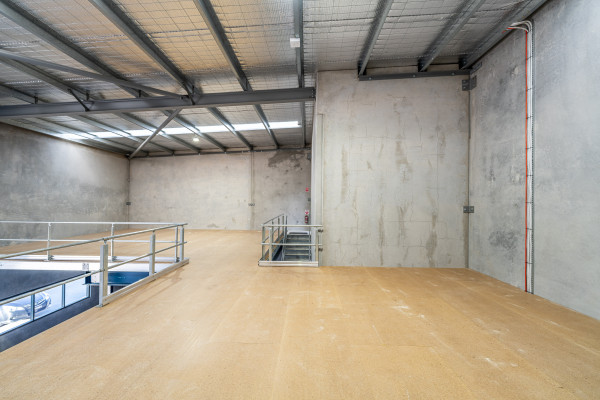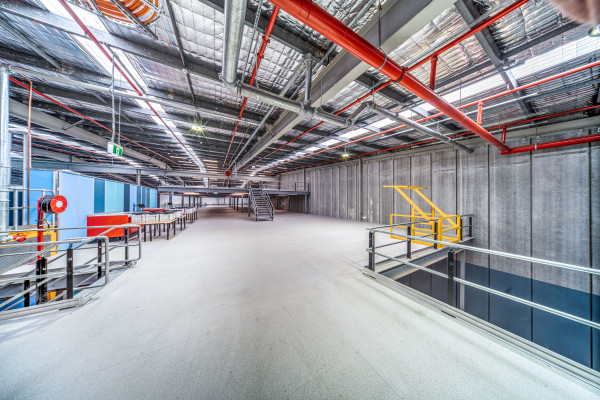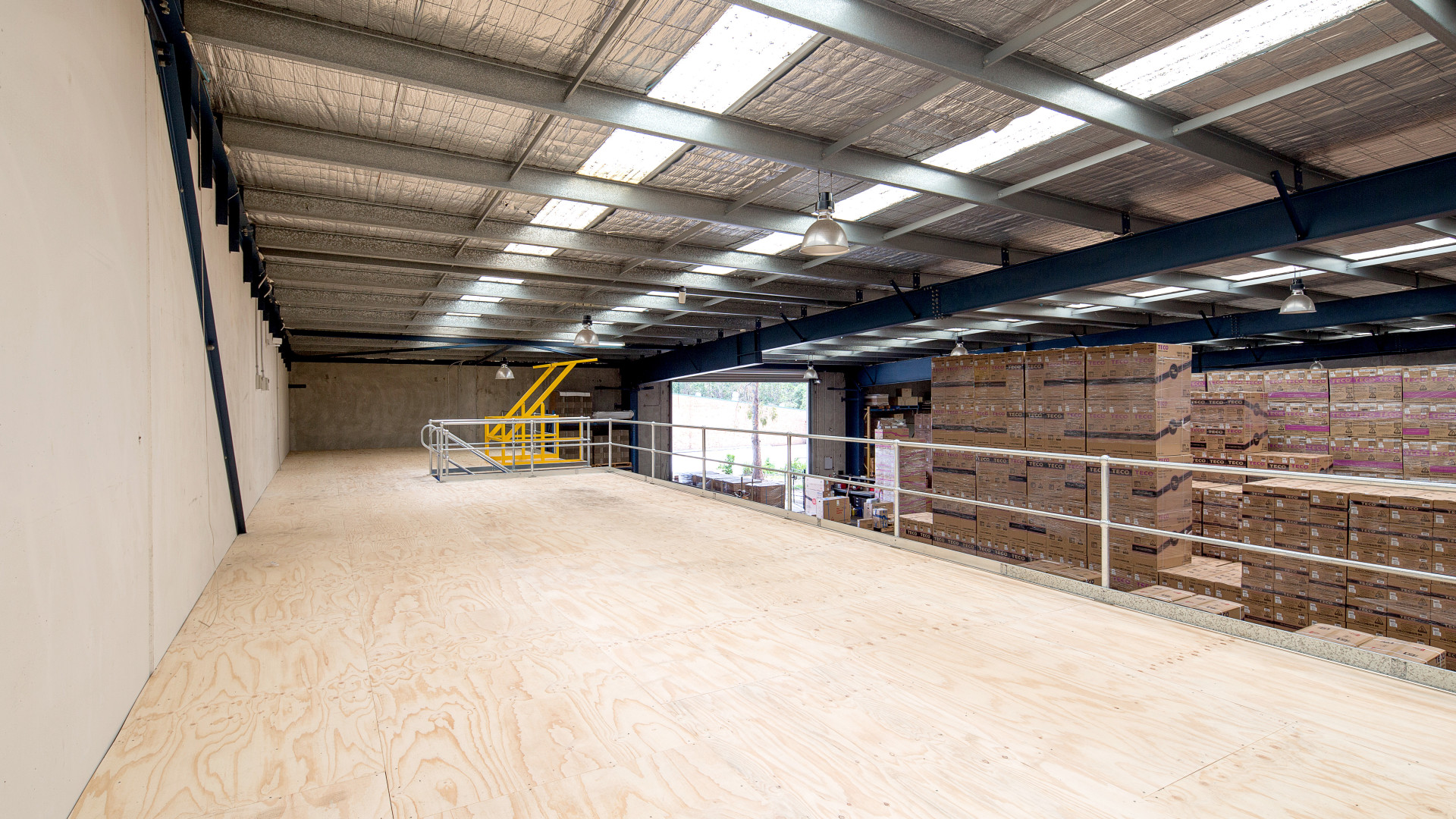In the fiercely competitive business environment of today, you need optimal warehouse space utilisation to stand above the rest. For any distribution centre, a surge in demand is a welcome challenge, but it raises concerns about whether the warehouse can handle the daily influx and outflow of goods. Expanding square footage or relocating is not always feasible, so warehouse space management is crucial for meeting the increased demand effectively.
At Unistor, our experience as Australia’s leading manufacturer and supplier of warehouse mezzanine systems means that we know exactly how to unlock that hidden potential. In this complete guide, we will provide practical strategies to make the most of your existing warehouse flooring.
Understanding Warehouse Space Utilisation
Efficient management of warehouse space is crucial in maintaining a productive and profitable operation. Challenges like inefficient layouts, seasonal demand fluctuations, outdated training and lack of advanced technologies often stifles the best use of space. By understanding and implementing strategic solutions, businesses can overcome these obstacles and enhance overall warehouse capacity management.

The Importance of Effective Layouts
A common issue in many warehouses is a layout that does not make the most of the available space. This often results from using inappropriate storage solutions or poor arrangement. To combat this, it is essential to reevaluate and redesign your warehouse layout.
Consider reducing aisle widths and adjusting door placements to optimise space. Incorporating factory and industrial mezzanine floors can also dramatically increase your storage capacity by utilising vertical space efficiently.
Seasonal Demands: Planning Ahead
When warehouses are unprepared for seasonal demand changes, overstock issues can lead to overcrowding. Last-minute inventory replenishment orders may take up significant space, hindering operational efficiency. An effective demand forecasting strategy will help plan inventory replenishment orders ahead of time to prevent these disruptions.
Outdated Protocols and Training
Warehouse capacity can be limited if workers are not properly trained on new storage solutions or protocols. Growth in the business often leads to changes in storage systems, requiring updated training to ensure optimal use of space and mitigate safety risks.
Lack of Warehouse Technology
The absence of modern warehouse management systems (WMS) may result in inventory mismanagement, which impedes floor space utilisation. WMS improves inventory visibility, enabling the identification of unused vertical space and better organisation of storage locations.
Strategies to Optimise Warehouse Space Utilisation
Warehouse floor space encompasses width and depth, but considering aisle spacing and equipment placement is crucial. Can aisles be narrowed without compromising workflow? Is there unused vertical space above your shelving? Evaluating this can reveal new opportunities to expand storage. Here are some effective ways to improve your warehouse capacity management:
Rejig your warehouse layout
Closely examine your current warehouse layout for opportunities to optimise storage capacity. Reducing aisle width, adjusting door placement, and reassigning storage locations can free up valuable space. Make sure the layout aligns with the logical flow of goods.
Tap into vertical space
Vertical storage systems and warehouse mezzanine solutions can help businesses utilise valuable overhead space. Industrial mezzanine solutions provide extra levels for storage without using up floor space, significantly boosting capacity.
Adopt cross-docking
Cross-docking directly transfers incoming goods to outbound shipments, reducing the need for storage. This leaves more space for inventory that requires long-term storage.
Use Automated Storage and Retrieval Systems (AS/RS)
AS/RS solutions like vertical lift modules and carousels maximise vertical space and increase storage density. This allows efficient use of floor space, reclaiming unused areas for profitable SKUs.
Acquire a Warehouse Management System (WMS)
A WMS provides real-time inventory tracking and demand forecasting, leading to accurate replenishment planning and minimising overstocking. Cycle counting ensures inventory accuracy, while demand forecasting helps prevent stock outs.
Consolidate warehouse locations
Combining separate warehouse areas may free up space. Consolidating receiving and shipping docks, for instance, can provide more storage space and streamline the flow of activities.
Build a warehouse slotting strategy
Strategic inventory slotting groups products based on shared characteristics or demand. High-demand items should be stored closer to the packing area for quick access, while bulk storage can be allocated to less accessible areas.
Regularly audit inventory
Regular audits identify broken shelving and dead stock that consume valuable space. Inventory audits ensure accuracy and identify slow-moving products that could be replaced with high-demand SKUs.
Purchase a demand forecasting system
A demand forecasting system predicts future inventory needs by analysing historical trends and sales data. This helps avoid stock outs and overstocking, which impact warehouse capacity.

Harnessing Mezzanine Floors
Factory mezzanine floors provide intermediate levels between the ground and ceiling, doubling storage capacity. Their flexible design accommodates various requirements, including shelving, racking and workspaces. Installation is quick, minimising disruptions, and can be adjusted as your storage needs change. A warehouse mezzanine floor is a highly cost-effective way to improve warehouse capacity management and enhance operational efficiency. Here is how they can benefit your floor space needs when things are tight:
-
New levels of storage: Utilise vertical space to unlock new storage possibilities and dramatically improve warehouse organisation.
-
Adaptable design: Modular systems can adjust or expand with ease, growing alongside your business’s changing requirements.
-
Easy expansion: Add levels effortlessly to maximise your warehouse's height without major renovations or downtime.
-
Cost-effective: Save on relocation or construction costs with 100% Australian-made, budget-friendly solutions.
-
Non-disruptive installation: Quick installation ensures minimal downtime so operations remain unaffected.
-
Safety features: Elevate inventory to reduce floor clutter and comply with fire regulations and Australian building codes.
Unistor: Your Partner in Warehouse Space Management
At Unistor, as Australia's leading manufacturer and supplier of mezzanine solutions, we understand the critical role that warehouse space utilisation plays in streamlining operations and reducing costs. By understanding your unique warehouse challenges and implementing these strategies, we can help take your business to the next level. For comprehensive support, Unistor's mezzanine floor solutions can provide a tailored, efficient, and sustainable approach to managing your warehouse capacity.
We offer end-to-end project services from consultation, design, manufacturing to installation, ensuring you deal directly with the manufacturer — saving you thousands in the long run. Do not let space limitations hold your business back. Ready to take your warehouse to new heights? Contact Unistor today and discover how our bespoke mezzanine solutions can unlock the full potential of your business.



